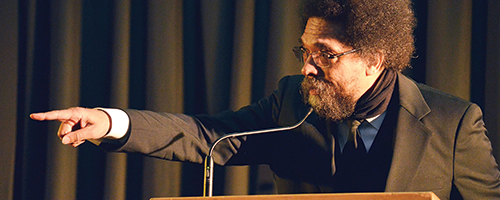Pollution and a high price tag make the Morrison Bridge remodel a nightmare
The Morrison Bridge remodel was set to be finished by November 2011. Yet on Jan 3, 2012, construction was just resuming on a project less than half-way complete at this point.
Between a poor contracting choice, pollution violations during construction and constant delays, commuters and city officials alike have a massive headache instead of a functional bridge.
What started out as a routine remodel has developed into one of the biggest money wasters of 2011. Following an accident that involved a 31-year-old woman skidding off the Morrison Bridge’s metal grating in 2005, Multnomah County decided it was time for the bridge to get a makeover. While the woman survived, faith in the safeness of the Morrison bridge was shattered.
The metal grating was originally selected because it was a sturdy yet considerably lightweight option to use in the center of the bridge, which is periodically lifted by motors to allow boats to pass.
Concerned by the slickness of the metal, Multnomah County sought to find a contractor that would provide an equally lightweight solution to fill the bridge’s center.
After receiving bids from several local Oregon- and Washington-based construction companies, Multnomah County decided on Conway Construction, a Ridgefield, Wash., based family-run contractor. Conway’s bid of $4.3 million to complete the job was far lower than the next bidder.
The company proposed to use a sturdy skid-resistant polymer material to replace the slippery metal grating. The initial plan was to replace the grating one quarter at a time, each quarter taking approximately 30 days to complete. As it turns out, this original time line was foolishly optimistic.
Construction started smoothly, both Conway and Multnomah County pleased with the quality and speed of work for such a low price tag. But trouble arose quickly when Conway was met with a backlash of grumbling environmental regulators.
Lead paint and other contaminants were seen falling directly into the Willamette river, despite the tarps that Conway hung beneath the bridge. Multnomah county issued a warning that construction would be shut down if the problem was not resolved immediately. Conway promised that further precautions would be taken to ensure the safety of the Willamette and its inhabitants.
Unfortunately, further safety checks in the weeks to come revealed that Conway’s containment system was still sub-par. In an inspection in July, the Department of Environmental Quality detected chromium, arsenic and lead in the water surrounding the Morrison remodel.
David Conway, president of Conway Construction, called the incident an “act of God,” holding to the belief that his company had nothing to do with the traces of chemicals that were found. Thoroughly displeased with Conway’s consistently poor environmental protection process, the county shut down construction mid-summer for a full eight weeks.
Multnomah County’s decision to temporarily halt the project pending further investigation on the violations was a wise choice for the safety of the river. However, the delay inevitably left the Morrison bridge, which usually carries around 50,000 commuters a day across the Willamette, as a useless eyesore scattered with construction vehicles.
Though the city could not entirely control the company’s negligence, their decision to shut down the remodel during a period of dry weather ideal for construction instead of instating proper plans from the beginning of the project was a massive failure on their end.
Lawyers on both sides continued to deny responsibility as wasted time ticked by. Multnomah County warned that they may terminate the contract prematurely, but nothing ever came from the empty threat.
While blame and anger continued to build toward the contractor for what seemed to be an inadequate job at adhering to certain environmental precautions, the truth behind Multnomah County’s poor decisions were eventually revealed. The county acknowledged that Conway’s bid for the remodel was approved before the construction company was properly reviewed.
It appears out of impatience from both sides, Conway confirmed the bid price of $4.3 million without receiving solid specifications from the city’s bridge committee. A county memo stated that the Bridge Section was uneasy about the construction company choice and would not have approved the job to move forward if they were given the chance.
While the city took some precautions to protect the endangered species of salmon and trout, such as Steelhead, that swim beneath the bridge, there were missteps on both sides that have caused concern for how environmentally safe the project truly has been.
Though preventative pollution measures were written into the contract by the city, there was nothing written about how Conway Construction would accomplish such measures.
This remodel, which could have been accomplished in a productive and straightforward manner, has shown the incompetence of both the county and the contractor. While bickering and blame games have harnessed the headlines, it is the Willamette’s wildlife that is paying the price.
It seems one corner was too sharply cut in order to secure the lowest bidding contractor. By accepting Conway’s bid relatively blindly at the beginning, the resulting missteps during the project will cost Multnomah County and its loyal taxpayers a little over an additional million bucks. This now-adjusted price sets Conway’s total estimated cost well over the third-place bidder’s offer.
Had Multnomah County chosen an initially more expensive contractor with more experience in such ventures, the Morrison job may have been completed by now, well within its financial and environmental constraints.
Perhaps next time Multnomah County will learn from its mistakes and see to it that all areas of a contract are sound before jumping on board.





Hi! Do you use Twitter? I’d like to follow you if that would be ok. I’m definitely enjoying your blog and look forward to new updates.